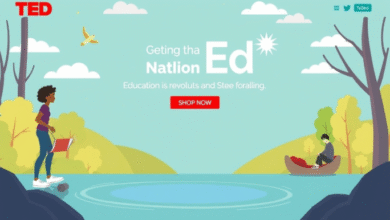ZeroHedge: The Influence of an Alternative Financial Voice

In today’s digital era, the way people consume news has changed dramatically. Mainstream outlets still play a big role, but alternative sources of information have gained a powerful foothold. Among them, ZeroHedge stands out as one of the most controversial, followed, and debated platforms. Loved by some and criticized by others, ZeroHedge has created a space where financial markets, politics, and global events are discussed without the traditional filters often seen in corporate-owned media. To understand its influence, one must look at its origins, style of reporting, and the audience it attracts.
The Origins of ZeroHedge
ZeroHedge was launched in 2009, during the aftermath of the global financial crisis. At a time when many people were questioning the stability of banks, the integrity of Wall Street, and the role of governments in propping up economies, the site quickly became a place for skeptics and truth-seekers. Its early posts carried a sense of urgency and defiance, challenging narratives presented by financial institutions and mainstream news outlets.
Unlike traditional media brands that put emphasis on polished delivery and corporate sponsorships, ZeroHedge embraced a raw, often blunt style. It presented itself as an outsider in the financial media landscape, positioning its content as a counterweight to what it saw as sanitized and overly optimistic reporting by bigger players.
The Writing Style and Tone
What sets ZeroHedge apart is its direct, sometimes confrontational tone. Articles are often sharp, skeptical, and filled with a sense of questioning authority. The style resonates with readers who distrust official data or believe that mainstream outlets downplay risks in order to maintain stability and confidence in markets.
The platform frequently publishes in-depth analysis, charts, and commentary that appeal to both finance professionals and casual readers looking for alternative viewpoints. Unlike some financial sites that target only investors or economists, ZeroHedge covers a wide range of topics including geopolitics, energy, technology, and cultural issues, making it a one-stop destination for contrarian perspectives.
A Platform for Contrarian Voices
A major part of ZeroHedge’s appeal lies in its willingness to go against the grain. When central banks lower interest rates, the site may question whether this is sustainable. When government officials release optimistic forecasts, ZeroHedge often highlights risks that others ignore. This contrarian spirit makes the platform both refreshing and polarizing.
For readers who are tired of hearing the same optimistic headlines, ZeroHedge offers an alternative angle. It thrives on skepticism, encouraging its audience to think critically about the information they consume. In many ways, it acts as a reminder that financial markets are not only about numbers but also about narratives, confidence, and perception.
Audience and Reach
The audience of ZeroHedge is diverse. On one side, it attracts traders, hedge fund managers, and finance professionals who look for insights that may not appear in mainstream coverage. On the other side, it draws in everyday readers who are simply curious about the global economy and want a viewpoint different from what they see on television or major newspapers.
This mix creates a unique community where complex financial data meets accessible commentary. The site’s influence can be seen in how often its articles are discussed on social media, financial forums, and even in professional trading circles. Even those who criticize the site cannot deny that its reach is significant.
Controversy and Criticism
ZeroHedge has faced its share of criticism. Detractors argue that its articles sometimes lean toward sensationalism or pessimism, framing every development as a potential crisis. Others claim that it amplifies alternative viewpoints that might not always be backed by mainstream consensus. Because of its tone, critics accuse the platform of feeding into fear or promoting narratives that challenge established institutions too aggressively.
However, many of its supporters see these criticisms as proof of its importance. In their eyes, ZeroHedge is doing exactly what alternative media should do: questioning authority, highlighting risks, and challenging the status quo. In an era where public trust in institutions is low, platforms like ZeroHedge fill a gap for audiences who feel underserved by mainstream outlets.
The Role of Anonymity
Another interesting aspect of ZeroHedge is its use of anonymity. Many of its articles are published under a collective pseudonym rather than a single journalist’s name. This adds a layer of mystery but also reinforces the idea that the platform is not about individual fame. Instead, it presents itself as a voice for alternative analysis rather than a personality-driven brand.
This anonymity has drawn criticism from those who believe journalism should be transparent about authorship, but it also contributes to the site’s outsider identity. For its readers, the message is often more important than the messenger.
Impact on Financial Discourse
Regardless of one’s opinion about ZeroHedge, it is hard to deny its influence on financial discourse. When markets face turbulence, when central banks make unexpected moves, or when geopolitical tensions rise, ZeroHedge often becomes part of the conversation. Analysts, traders, and even mainstream journalists sometimes reference or react to its posts.
The platform has created a unique role for itself: not as the definitive source of truth, but as a necessary counterbalance in a world where financial optimism often dominates headlines. Its existence ensures that alternative viewpoints remain part of the discussion, which in turn enriches public understanding of complex global issues.
ZeroHedge and the Broader Media Landscape
The rise of ZeroHedge also highlights the broader transformation of media. Audiences no longer rely on a handful of newspapers or television channels for information. The internet has opened space for countless alternative voices, each carving out its own niche. ZeroHedge is just one example of how digital platforms can disrupt established narratives and build communities around shared skepticism.
This democratization of information has both positive and negative sides. On one hand, it empowers readers to access diverse perspectives. On the other, it challenges them to navigate a flood of content where credibility varies. In this environment, platforms like ZeroHedge thrive because they speak to an audience that values independence over consensus.
Looking Ahead
The future of ZeroHedge will likely mirror the uncertainties it covers. As financial markets evolve, as global politics shift, and as technology changes the way people access information, platforms like ZeroHedge will remain relevant. Its influence may rise or fall depending on the trust it earns from readers and the quality of insights it provides.
One thing is certain: ZeroHedge has already secured a place in the modern media ecosystem. Whether people love it or criticize it, they cannot ignore it. The platform represents a growing appetite for information that goes beyond official narratives, and that demand is unlikely to disappear anytime soon.
Conclusion
ZeroHedge is more than just a financial blog. It is a symbol of the changing media landscape, a reflection of public skepticism, and a platform that challenges conventional wisdom. Its sharp tone, contrarian analysis, and willingness to question authority make it both controversial and influential.
For readers who want polished optimism, mainstream outlets will always provide that. But for those who seek alternative perspectives, ZeroHedge offers a raw and unfiltered look at the world. It is not about presenting answers with absolute certainty but about asking the questions that others avoid. In doing so, it ensures that financial discourse remains vibrant, diverse, and constantly debated.



